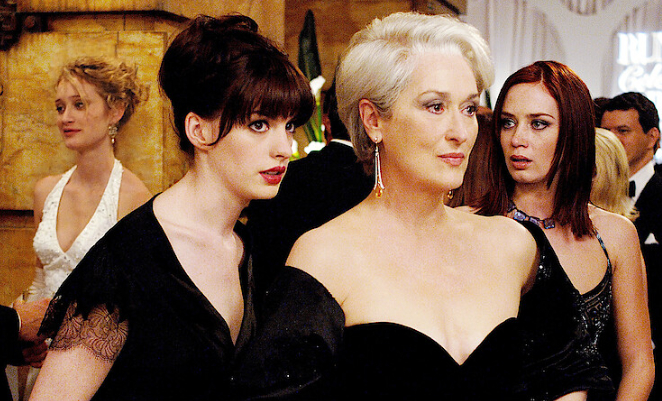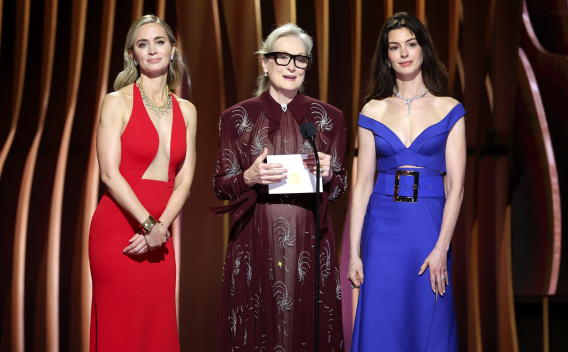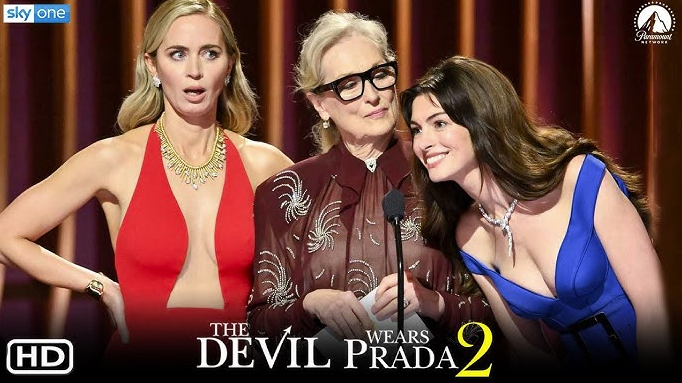The Devil Wears Prada (2025)
I. PLOT OVERVIEW
Nearly two decades after her chilling reign over the fashion world, Miranda Priestly reclaims center stage in The Devil Wears Prada (2025). But the world she once ruled with a withering glance has transformed. The runway is digital, the pace is ruthless, and legacy is fragile. Runway Magazine, once the gospel of high fashion, now scrambles to stay relevant in a world driven by virality, influencers, and algorithmic trends.
Miranda, played with delicious frost by Meryl Streep, is no longer interested in mere influence—she wants permanence. Yet as her grip begins to slip, a ghost from her past reenters the frame: Andy Sachs (Anne Hathaway), now a respected journalist and mother, with no intention of returning to the chaos she once escaped—until one chance meeting reopens old doors.
Meanwhile, Emily Charlton (Emily Blunt), Miranda’s former right-hand woman, has risen into power herself as a rival editor-in-chief. But ambition this sharp rarely plays fair, and Emily is no longer content with survival—she wants the crown. What begins as professional competition quickly escalates into a battle of loyalty, legacy, and personal reckoning.
The stage is set not just for couture, but for combat.
II. THEMES & TONE
The film expands its scope beyond fashion to explore relevance in an evolving world, and the fragile tightrope women walk between ambition, identity, and aging. Miranda’s struggle isn’t just against trends—it’s against time. The film poignantly asks: when you’ve built an empire, how do you know when to adapt… and when to let go?

Loyalty becomes a central question—between women, between generations, and between past and present selves. Andy, torn between the stability she’s built and the chaos Miranda awakens in her, is no longer a naive assistant but a woman who knows exactly what’s at stake.
There is also a biting commentary on media metamorphosis—how virality has replaced vision, and whether artistry can survive the click-driven marketplace. The film doesn’t mourn the past; it interrogates what power looks like when platforms, not people, dictate taste.
III. PERFORMANCES
Meryl Streep reprises Miranda with the cold precision and elegance that made her iconic—but there’s a deeper weariness now, a subtle fear behind the control. Her performance whispers vulnerability beneath the velvet armor.

Anne Hathaway returns with a quieter, more grounded presence. Andy’s intelligence and maturity balance Miranda’s iciness, creating a new dynamic—less master and apprentice, more woman to woman. Her scenes are loaded with emotional complexity, particularly as motherhood and ambition collide.
Emily Blunt is the surprise powerhouse. Emily Charlton, once comic relief, now commands with sophistication and venom. She brings fire and calculation, turning the rivalry into a psychological chess match. Her arc—hungry, unapologetic, and shrewd—elevates the narrative.
The chemistry between the three leads is electric, tense, and laced with history. Every look and line carries weight.
IV. CINEMATOGRAPHY & STYLE
Visually, the film dazzles. From Paris rooftops to the sleek offices of new media empires, the cinematography fuses luxury with modernity. The fashion sequences are as bold as ever—redefining elegance for a post-Instagram world. Haute couture still reigns, but so do shadows and reflections, echoing the characters’ inner conflicts.

The tone is sharp, elegant, and emotionally intelligent. The dialogue is refined but razor-edged. And like the original, every scene moves with purpose—whether it’s a brutal boardroom exchange or a silent stare across a gala floor.
V. FINAL VERDICT
The Devil Wears Prada (2025) isn’t just a sequel—it’s a statement. It honors the legacy of the original while reinventing its characters for a world that no longer bows to gatekeepers. It is a drama about women wielding power, aging in industries that punish visibility, and choosing whether to fight for the throne—or build a new one altogether.
This is not about fashion alone. It’s about ambition, evolution, and the cost of staying relevant in a world that forgets quickly. It’s a film that seduces you with beauty, then cuts deep with truth.
Rating: 8.7 / 10
Fierce, intelligent, and unapologetically stylish—The Devil Wears Prada returns with power, poise, and a sharper bite than ever.
